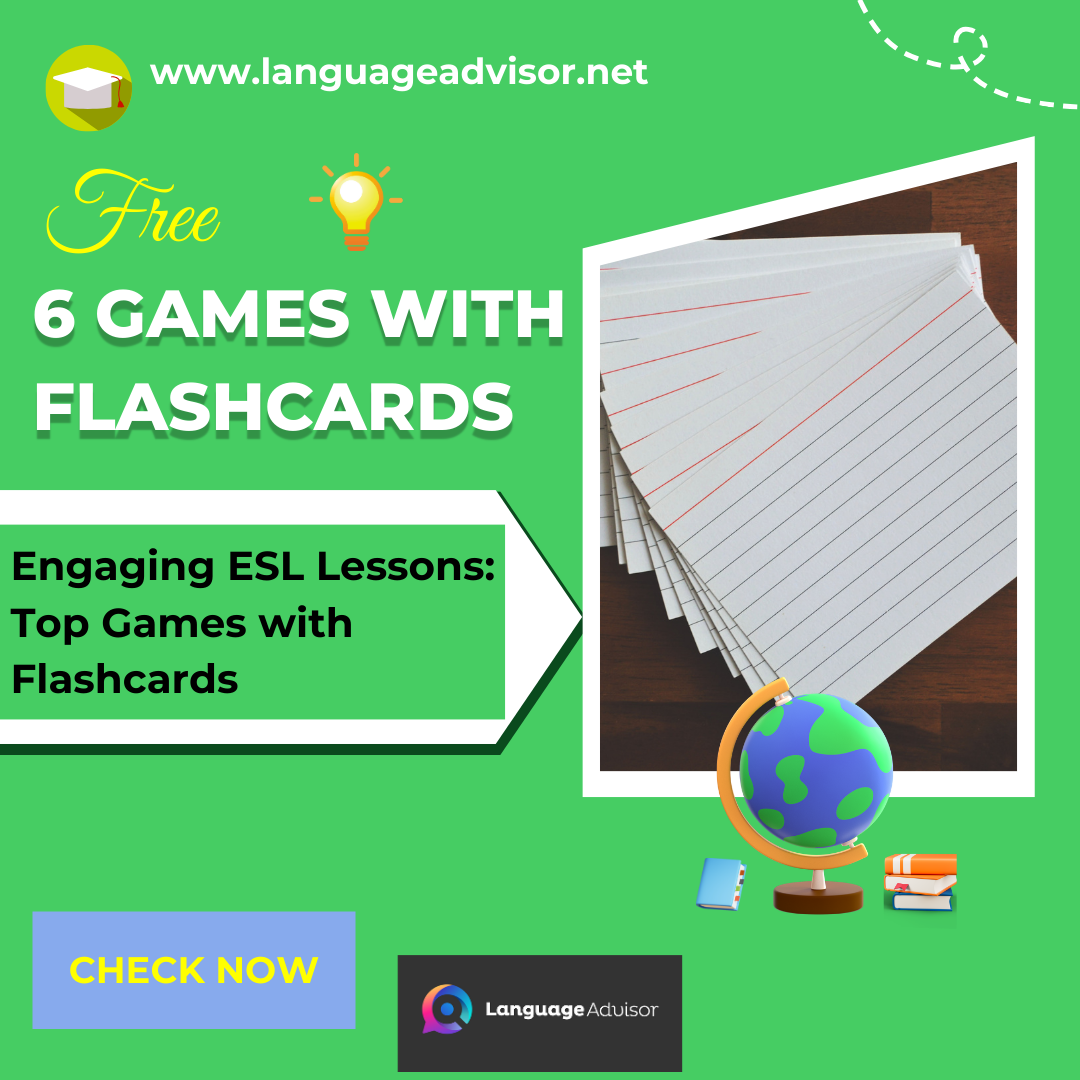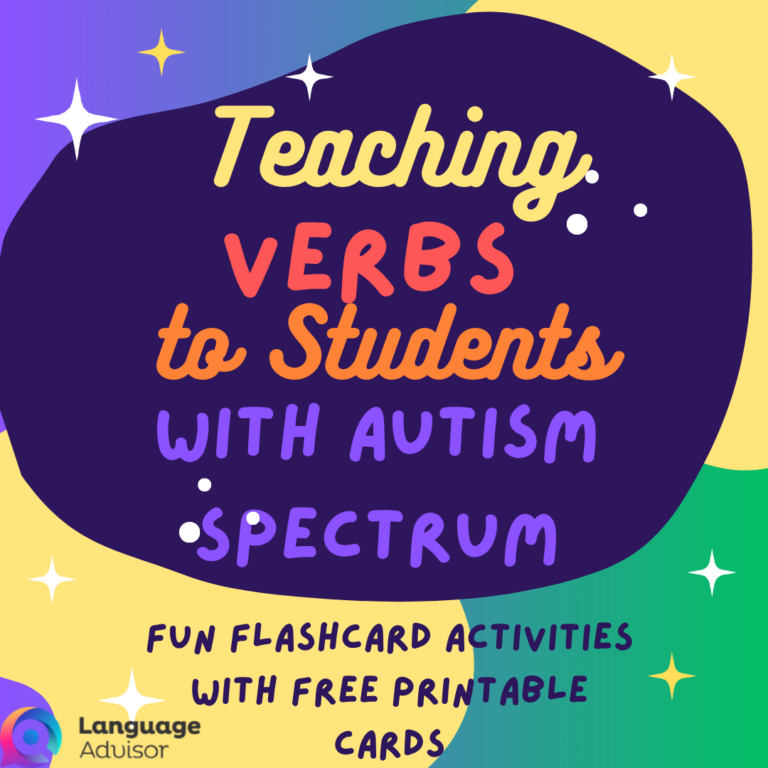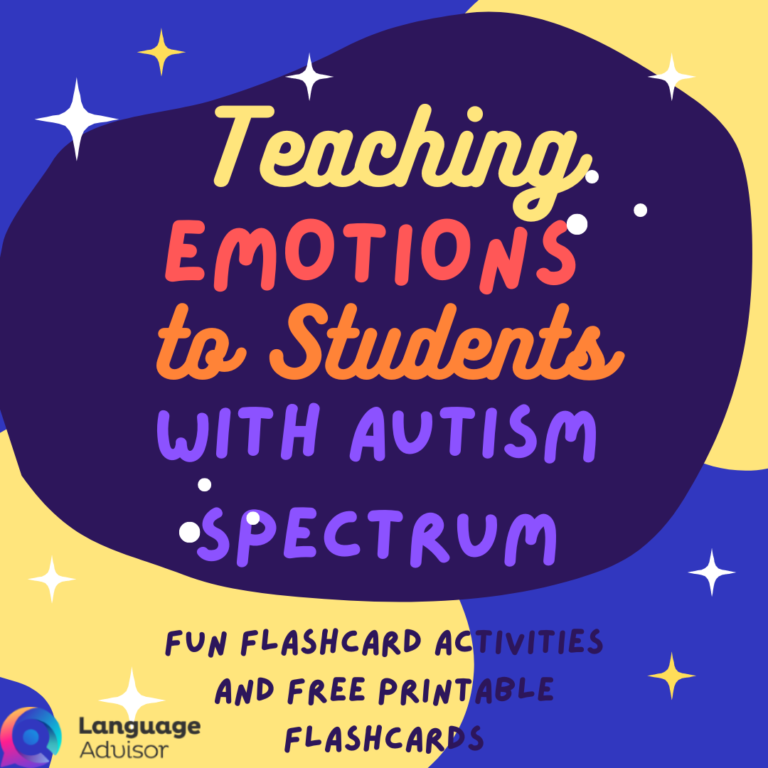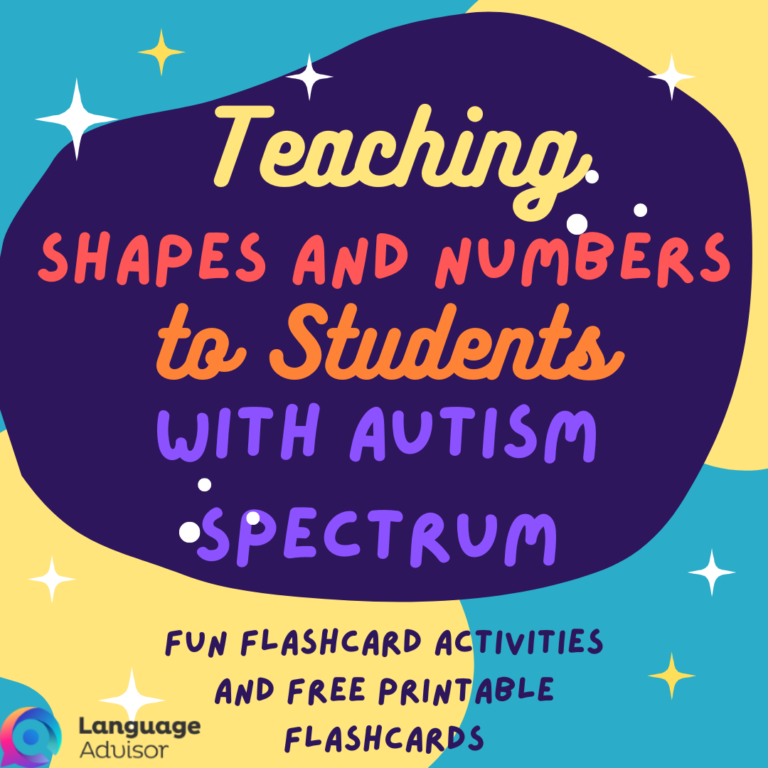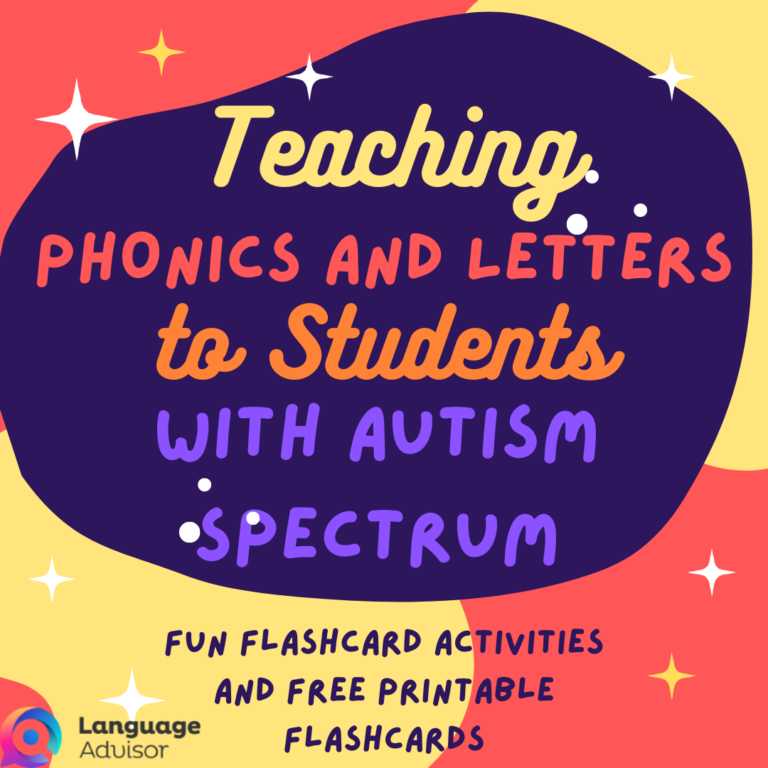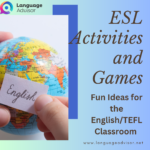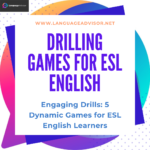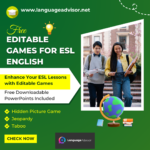6 Games with Flashcards. Engaging ESL Lessons: Top Games with Flashcards
6 Games with Flashcards

Flashcards are a versatile and effective tool for teaching English as a Second Language (ESL). They can be used to introduce new vocabulary, reinforce learning, and make lessons more interactive and fun. In this blog post, we’ll explore some of the best games that you can play with flashcards to help your students learn English in an engaging and enjoyable way.
Whether you’re teaching young learners or older students, these games can be adapted to suit any age group and proficiency level.
6 Games with Flashcards

Flashcards at Dawn
Motivate your students to speak English with this entertaining flashcard game. This ESL game works very well with young learners.

- Age/Level: Young learners
- Time: 10 minutes
- Players: 2 teams
- Preparation: Flashcards of the target vocabulary
- Aim: To be the first to say what’s on a flashcard
Procedure
Before you play, prepare some flashcards of the target vocabulary.
Divide the class into two teams.
One student comes up from each team. Both students are then given a flashcard.
The two students stand back to back in the middle of the classroom.
Each student holds their flashcard in front of them with the picture side facing away.
Both students then take three steps away from each other before quickly turning around. This is similar to the pistols at dawn scenario.
The two students then race to shout out what’s on the other student’s flashcard. The first student to shout out the word wins a point for their team.
Alternatively, you can ask the students to draw pictures instead of using flashcards. You could also use numbers instead of pictures.
6 Games with Flashcards

Mr Wolf
This version of Mr Wolf is useful for teaching a variety of yes/no questions.

- Age/Level: Young learners
- Time: 10 to 15 minutes
- Players: Individual
- Preparation: Flashcards of the target vocabulary
- Aim: To answer yes/no question about a flashcard
Procedure
The students line up against the wall and you stand at the opposite wall. Show the students your chosen flashcard.
Ask the students questions about the flashcard, which would get a no response. Every time the students answer no, they have to take one step forward.
When the students are close to you, ask them a question about the flashcard that would get a yes response.
When the students answer yes, you chase the students and try to tag them out. Whoever is tagged is out of the game.
Example: Flashcard of a car
The teacher shows a picture of a car and asks, “Is it a motorbike?” The students say, “No, it isn’t.” They then move forward one step.
The teacher continues asking a few more questions to elicit a no response. Each time the students answer no, they take a step forward.
When the students are near the teacher, the teacher asks, “Is it a car?” The students answer, “Yes, it is.”
The teacher then chases and tries to tag the students before they reach the wall. Whoever is tagged is out.
The game can also be played with a strong student asking the questions.

Sumo
Here is a fun flashcard game to play with young learners or beginners.

- Age/Level: Beginners
- Time: 15 minutes
- Players: 2 teams
- Preparation: Flashcards of the target vocabulary
- Aim: To practice matching vocabulary to pictures
Procedure
The players must always stay inside the ring. They cannot touch each other because their hands are behind their backs.
Insist that the students who form the ring don’t shout or give away the answer. Impose a penalty point to the other team if this happens.
When a player knows the answer, they put their hand up and you ask them what the word is. If the player is correct, they win a point for their team.
Then two new players enter the centre of the ring and the game continues with new flashcards.
Continue until everyone has had a chance to play.
The team with the most points at the end of the game is the winner.
6 Games with Flashcards

The Flashcard Exchange
You can use this entertaining flashcard game to teach vocabulary on a variety of topics, such as weather, food, animals, etc. This game helps students to associate words with pictures.

- Age/Level: Young learners
- Time: 10 to 15 minutes
- Players: Individual
- Preparation: Flashcards of the target vocabulary
- Aim: To associate words with pictures
Procedure
Put the students’ chairs in a circle (minus one chair).
Each student sits in a chair and holds a flashcard. One student stands in the middle of the circle with no flashcard.
If you were teaching sports, each student would have a different picture of a sport on their flashcard.
Then you call out two different sports.
The two students who have those sports on their flashcards must swap places.
The student in the middle has to try to sit in one of their seats while they are swapping chairs.
If the student in the middle manages to sit in one of the chairs, the student left standing has to give their flashcard to the student who took their place.
Then you call out two more sports and so on.
All the students should have each flashcard at least once by the end of the game.

Tiddlywinks
For this fun flashcard game, you need a list of questions based on a set of flashcards.

- Age/Level: Young learners
- Time: 15 minutes
- Players: Pairs/Small teams
- Preparation: Tiddlywinks, prepared questions and flashcards
- Aim: To answer questions about flashcards
Procedure
Begin the game by marking a start line on the floor. Split the class into pairs or small teams.
Put the flashcards face up and spaced out at the other end of the room.
Give each team member a number. Player one from each pair or team goes first.
Give player one 2 tiddlywinks or 2 coins.
Show the players how to move the tiddlywinks.
To do this, they must hold the tiddlywink between their forefinger and thumb and press down on the edge of the other tiddlywink. This fires the tiddlywink forward.
Ask a question based on one of the flashcards.
The first player from each team has to flip their tiddlywink across the room and onto the correct flashcard.
Once a student has their tiddlywink on the flashcard, they can answer the question.
If the student answers the question correctly, they win a point for their team.
Then, the players swap and the game begins again from the start line with a new question.
6 Games with Flashcards

Whisper
This ESL flashcard game is great for reviewing vocabulary.

- Age/Level: Any
- Time: 20 minutes
- Players: 2 teams
- Preparation: 2 sets of identical flashcards
- Aim: To communicate words in a certain order
Procedure
Arrange the class into two teams.
Put two sets of identical flashcards at the front of the class next to the board. Then draw a line on the board to separate the two teams.
Have each team sit in a row facing the board. The first student in each row should be near the board and the last student should be near the back of the class.
Go to the back of the two rows and whisper three or four words to the two students at the back.
The student at the back of each row whispers these words to the student in front of them. They must do this in the order they heard the words.
The next student whispers the words to the student in front of them and so on, until the words have travelled all the way to the front.
The student at the front of each row must grab the flashcards that match the words and stick them to the board in the correct order.
The first team to put up the flashcards in the correct order wins a point.
When the round is over, the students at the front of the class move to the seats at the back and everyone else moves up a place.
Then the process is repeated.
The team with the most points at the end wins.
You can also use this flashcard game to teach or review prepositions of place. Just add preposition cards and mix them up with the other flashcards. Whisper a phrase to the two students at the back, e.g. The ball is in the box. The student at the front would have to form the flashcards, e.g. ball, in, box. Then say the complete sentence.
For higher-level students, use flashcards with words rather than pictures.

Flashcards are more than just simple learning aids; they can transform your ESL lessons into dynamic and interactive experiences. By incorporating these flashcard games into your teaching repertoire, you can create a fun and stimulating environment that encourages active participation and effective learning. Try out these games in your next lesson and watch your students’ engagement and language skills soar!
6 Games with Flashcards. Here are some flashcards


